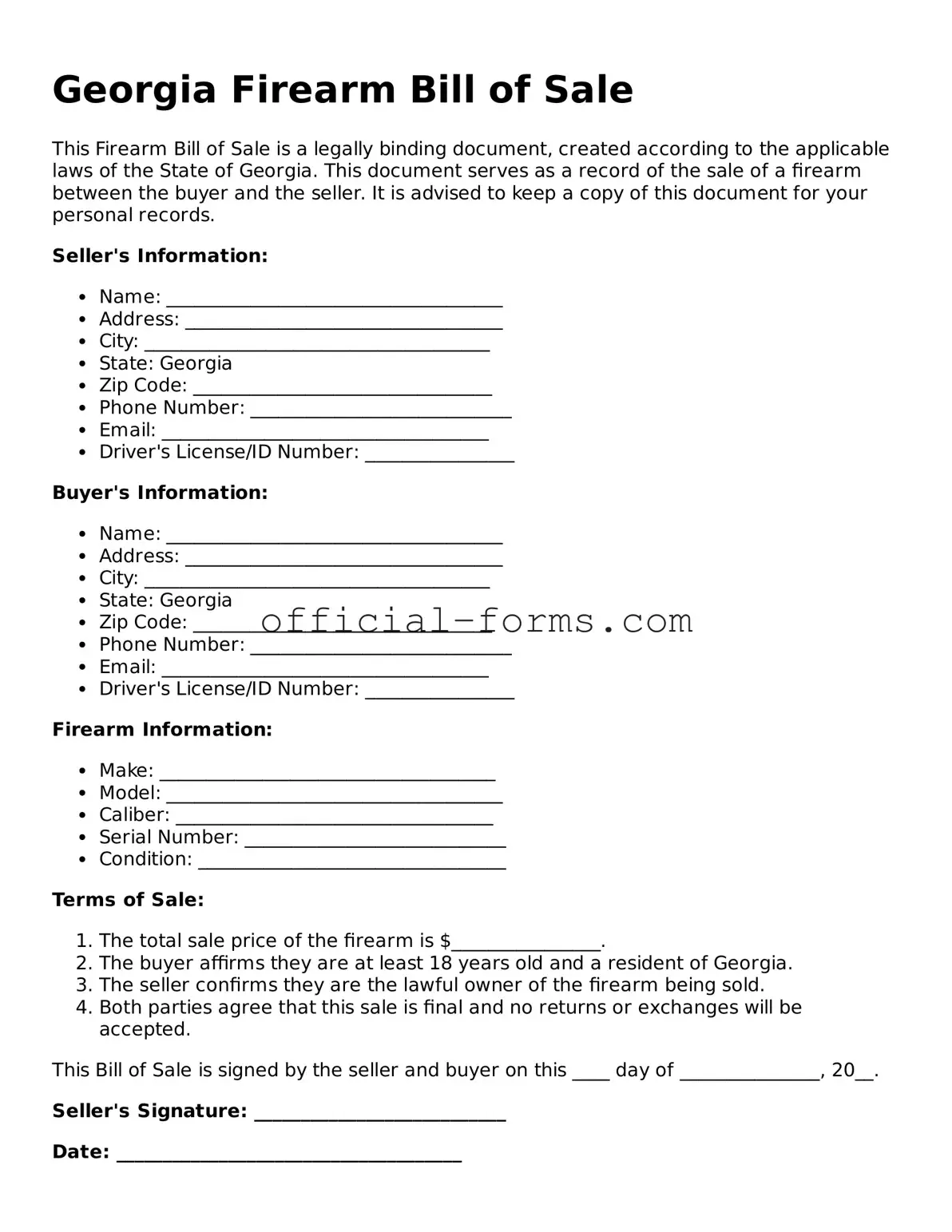Official Georgia Firearm Bill of Sale Document
The Georgia Firearm Bill of Sale form is a legal document that records the transfer of ownership of a firearm from one individual to another. This form serves as proof of the transaction, providing essential details such as the buyer's and seller's information, the firearm's description, and the date of sale. Understanding this form is crucial for both parties to ensure compliance with state laws and to protect their rights during the sale.
Open My Firearm Bill of Sale Now
